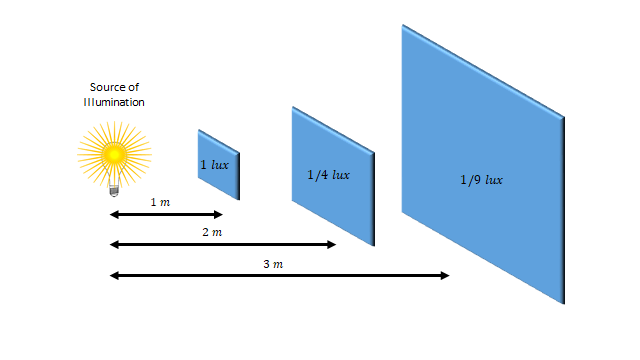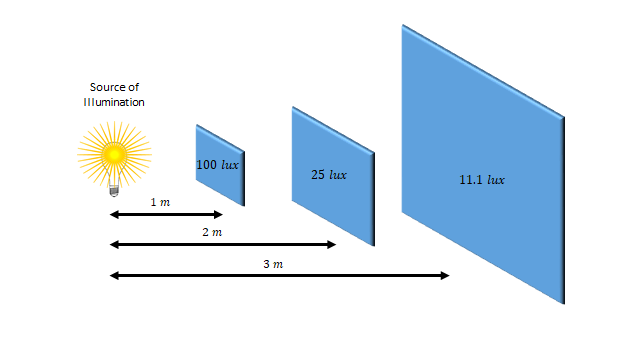10 Inverse Square Law
Aaron Lee
Put simply, the further an object or surface is from a light source, the less light will hit that object or surface. Seems obvious, but it is worth noting that the level of illumination on a surface drops with the square of the distance.
Expressed as an equation:
[latex]Illumination (lux) =\frac{Light-intensity (candela)}{distance^2(m)}[/latex]
Example 1: If 1 Lux of illumination is measured on a surface that is one meter away from a light source, the illumination would be 1/4th as bright, or ¼ Lux two meters away, and 1/9th as bright, or 1/9th Lux three meters away.

This example is a very low value of illumination, but it does illustrate the concept of the inverse square law. A more realistic value of luminous flux density might be around 100 Lux.
Example 2: If 100 Lux of illumination is measured on a surface that is one meter away from a light source, the illumination would be one quarter as bright, or 25 Lux two meters away, and 1/9th as bright, or 11.1 Lux three meters away, and so on.

